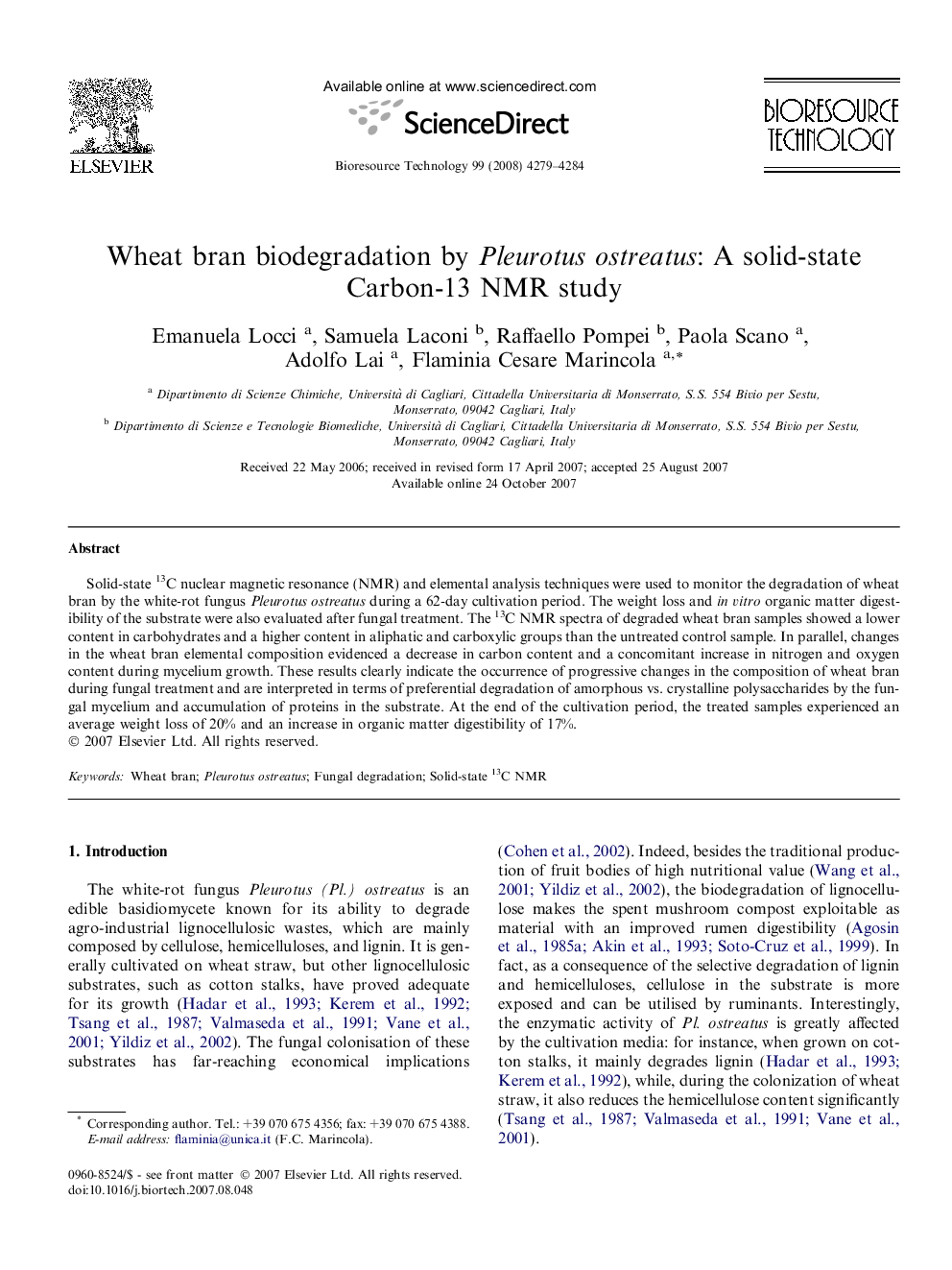| Article ID | Journal | Published Year | Pages | File Type |
|---|---|---|---|---|
| 684374 | Bioresource Technology | 2008 | 6 Pages |
Solid-state 13C nuclear magnetic resonance (NMR) and elemental analysis techniques were used to monitor the degradation of wheat bran by the white-rot fungus Pleurotus ostreatus during a 62-day cultivation period. The weight loss and in vitro organic matter digestibility of the substrate were also evaluated after fungal treatment. The 13C NMR spectra of degraded wheat bran samples showed a lower content in carbohydrates and a higher content in aliphatic and carboxylic groups than the untreated control sample. In parallel, changes in the wheat bran elemental composition evidenced a decrease in carbon content and a concomitant increase in nitrogen and oxygen content during mycelium growth. These results clearly indicate the occurrence of progressive changes in the composition of wheat bran during fungal treatment and are interpreted in terms of preferential degradation of amorphous vs. crystalline polysaccharides by the fungal mycelium and accumulation of proteins in the substrate. At the end of the cultivation period, the treated samples experienced an average weight loss of 20% and an increase in organic matter digestibility of 17%.
